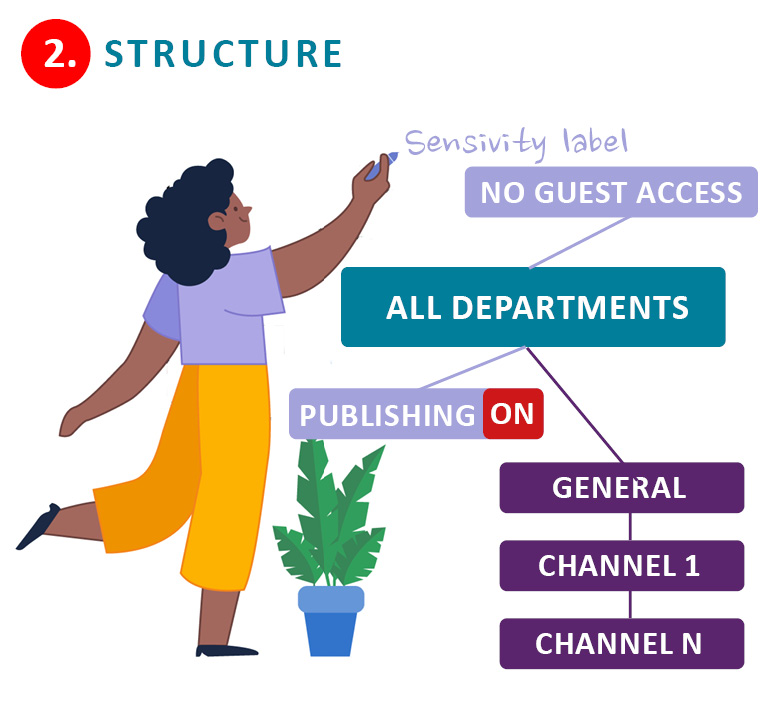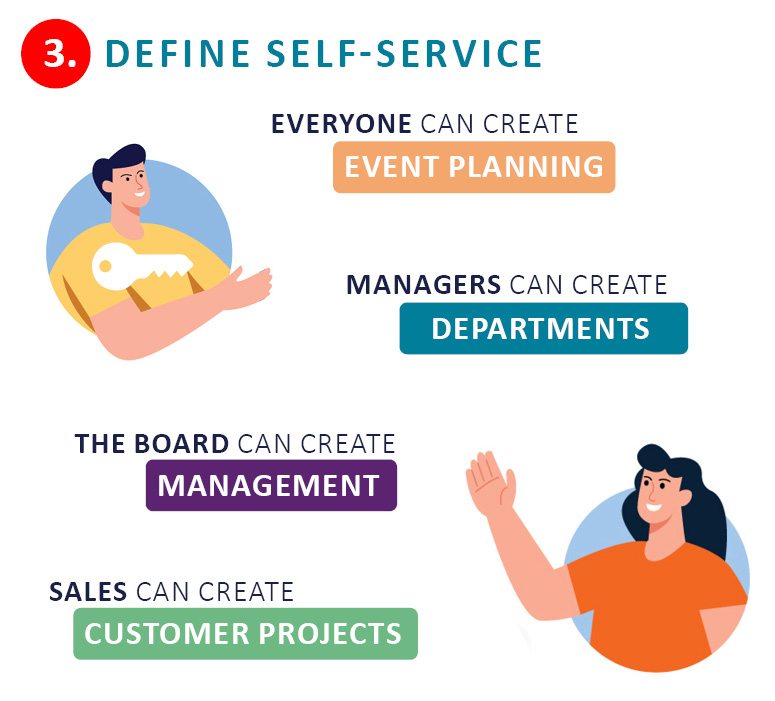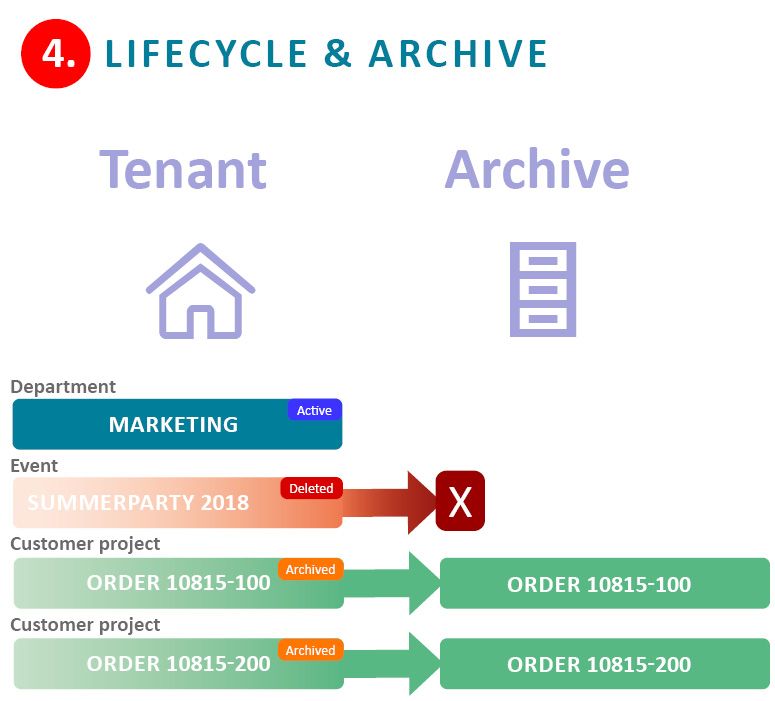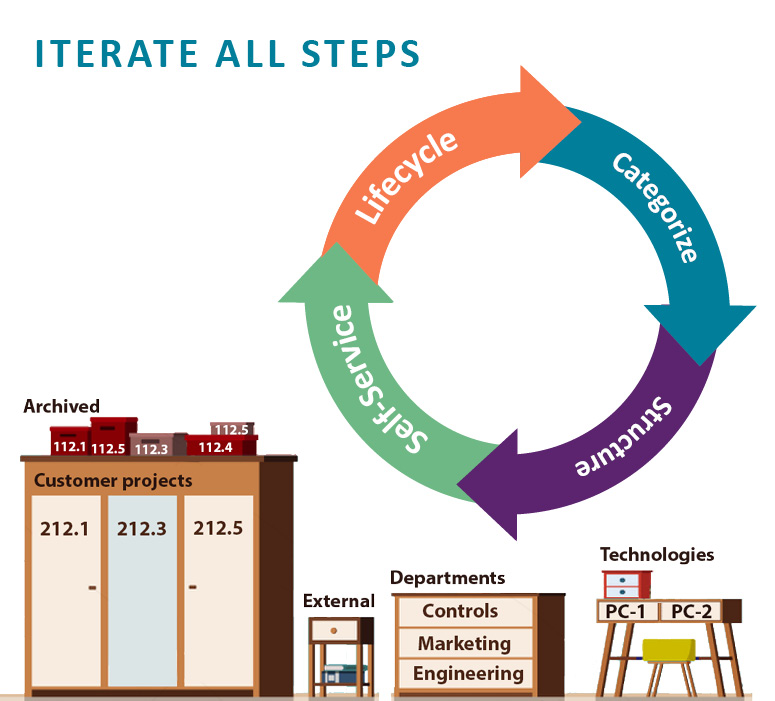Creating a new team is easy and offers enormous potential in collaboration. But with self-service enabled, this can quickly lead to duplicates, neglected teams, and chaos because each employee is allowed to create as many teams as they want.
In four steps you reduce these problems to a minimum and keep your tenant clean.
Step 1:
Categorize
Create meaningful categories of teams. From now on, when creating a team, your employees must specify in which category they want to create a team.
More
STEP 2:
Structure
Define uniform structures per category. From now on, all teams follow fixed rules depending on the category. These can be templates, sensitivity labels or general settings.
More
STEP 3:
Define Self-Service
Self-service should also be defined differently per category. For example not all employees should be able to create new departments. Categorization also simplifies your governance.
More
STEP 4:
Lifecycle & Archive
The lifecycles of your teams also differ per category. Make sure that inactive teams are archived or deleted so that their tenant doesn’t descend into chaos.
More
Repeat steps in iterations
Iterate
Repeat the steps as often as you like. As long as you have Microsoft Teams in use, you should also keep all four steps in mind and repeat them more often in the beginning and less often later.
Mehr